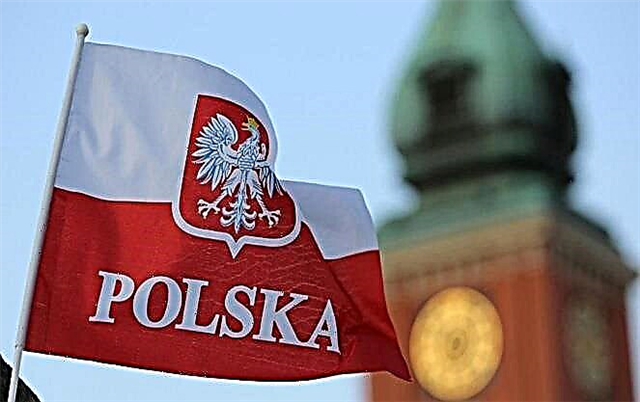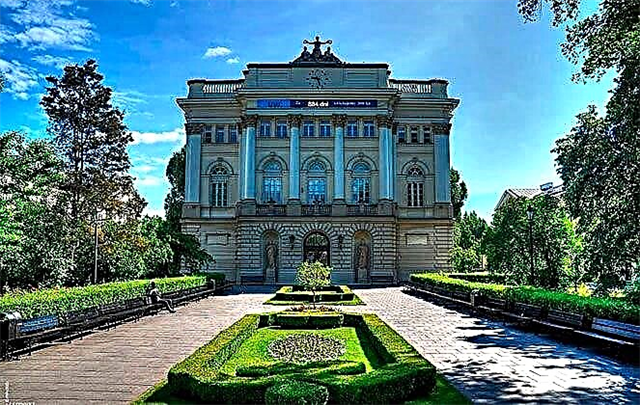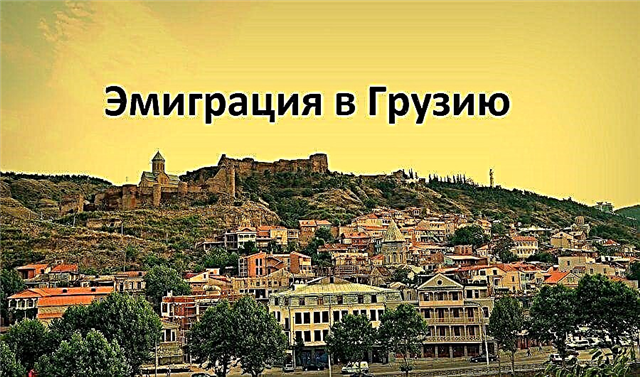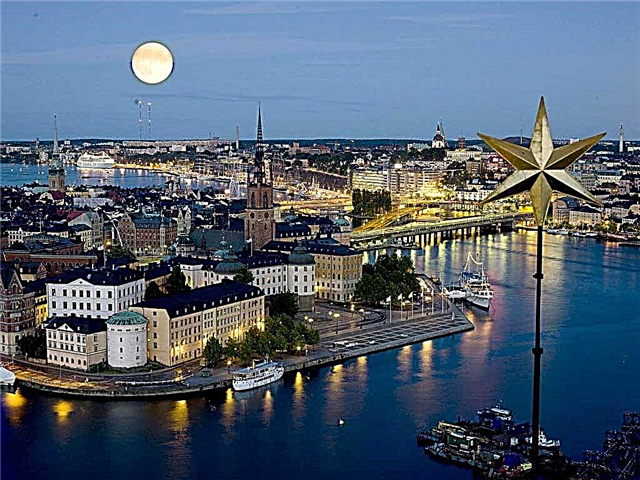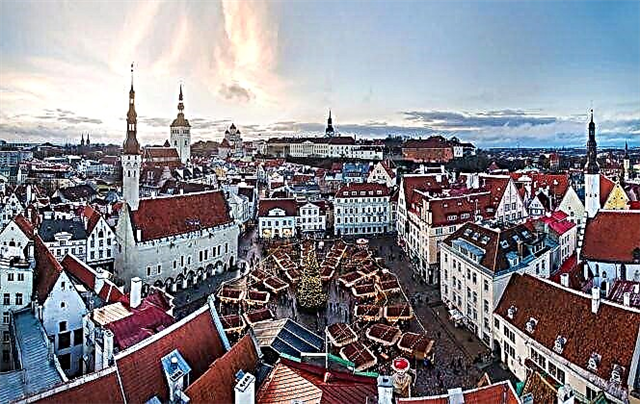28 years have passed since the day when the Republic of Estonia seceded from the USSR and restored its statehood. During this time, the small Baltic country has achieved impressive results: in terms of the level and quality of life, economic and social indicators, Estonia has not only surpassed its neighbors - Latvia and Lithuania, but also competed with Poland and the Czech Republic. In this regard, life in Estonia gives Russian immigrants the opportunity not only to improve their material well-being, but also, after going through the naturalization process, to obtain Estonian citizenship and become residents of the European Union.

Quality and standard of living in Estonia
The rise in the standard of living in the country is closely linked with the development of the Estonian economy. GDP growth in Estonia is one of the highest in the EU - in 2021 it amounted to 3.9%.
The main components of success are the construction, manufacturing, transport industries, as well as the areas of scientific activity and high technology.
Such traditional spheres for the country as the production of meat, milk and other agricultural products, catching Baltic herring and others have lost their former importance, giving way to a high-tech economy.
At the same time, there is an acute shortage of labor and foreign investment in the country, which increases the chances of foreign immigrants getting a residence permit in Estonia.
Thanks to the thoughtful and balanced policy of the state in  In the socio-economic sphere, the standard of living in Estonia is constantly increasing. The non-profit organization Social Progress Imperative (USA), based on an analysis of 54 basic human needs, including freedom of choice, the level of tolerance and others, provided a rating in which Estonia took 27th place among 100 countries.
In the socio-economic sphere, the standard of living in Estonia is constantly increasing. The non-profit organization Social Progress Imperative (USA), based on an analysis of 54 basic human needs, including freedom of choice, the level of tolerance and others, provided a rating in which Estonia took 27th place among 100 countries.
The personal safety of citizens in the country is high. The crime rate is falling every year.
According to the Legatum Institute, the Republic of Estonia is among the world leaders in the quality and well-being of life. Thus, in the Prosperity Index of 175 countries of the world at the end of 2021, Estonia confidently ranks 26th, ahead of such EU members as Slovakia, Poland, Czech Republic, Italy, Lithuania, Latvia.
Employment Opportunities and Pay
 The labor force crisis has affected almost all sectors of the Estonian economy - construction, agriculture, service sectors, etc. 87% of Estonian employers experience difficulties in recruiting not only highly qualified specialists, but also middle and lower-level workers - programmers, drivers, doctors.
The labor force crisis has affected almost all sectors of the Estonian economy - construction, agriculture, service sectors, etc. 87% of Estonian employers experience difficulties in recruiting not only highly qualified specialists, but also middle and lower-level workers - programmers, drivers, doctors.
Since EU citizens are in no hurry to go to work in Estonia, most of the migrant workers who want to work here come from Ukraine, Belarus and Russia. The issues of employment of such migrants are detailed in the articles of the "Law on Foreigners" (ZI) dated 09.12.2009.
GDE Error: Error while uploading file - Turn off error checking if necessary (404: Not Found)
Citizens of the CIS, with the necessary qualifications and experience, have the opportunity to legally work at the invitation of the employer:
- Not more than 365 days within 455 days, for seasonal workers - 270 days within 365 days (Art. 106 ZI) when registering short-term work with the Police and Border Guard Board. The employer is obliged to pay a gross salary for short-term work in the amount of at least the average monthly salary for the last year (Art. 107 ZI) - 1,310 euros (01.03.2021 - 01.03.2021). Remuneration for seasonal workers is established by agreement of the parties.
- As a leading specialist for short-term work and with a monthly payment of at least the average salary multiplied by a factor of 2 (2,620 euros).
- An employee with an urgent residence permit for a period of up to 5 years (with the right to prolongation up to 10 years) - Articles 112, 118 ZI. At the same time, the annual quota must be observed (0.1% of the Estonian population). In 2021, it amounted to 1,315 people.
The legislation also obliges labor immigrants applying for a residence permit in Estonia to speak Estonian at a level of at least A2 (Art. 179, 187 ZI).
According to migrant workers, there are more chances of finding a high-paying job in Tallinn, as well as in Tartu, the largest cities in the country. Depending on the region, the salary level can range from 950 to 1,470 euros. The average net salary in the country is 1,155 euros. To find a job it is best to use one of the resources www.cvkeskus.ee, www.cv.ee.
Take a sociological survey!
[yop_poll id = ”14 ″]
Social security system
Estonia has a stable social security system, including benefits. The main body responsible for the implementation of social policy in the country is the Ministry of Social Affairs. The legal and organizational foundations of social security are regulated by the Law “On Social Security” dated 09.12. 2021.
The social security system includes various types of material assistance: benefits for children, unemployment benefits, the provision of support services (parental leave, etc.).
Issues related to pension provision are regulated by articles of the laws "On State Pension Insurance" dated 05.12.2001
and "On funded pensions" dated 04/14/2004
In addition to citizens, foreigners who have reached the age of 63 (for women) and 65 years (for men) and who have worked in the country for at least 15 years can count on a pension in Estonia.
The Estonian pension system has three pillars:
- state pension, which is managed by the Social Insurance Department;
- compulsory funded pension (pension center);
- additional funded pension (insurance companies, banks).
The living wage in Estonia in 2021 was 150 euros per person, the basic part of the pension was 191.6 euros.
Medical service
The Estonian health care system is based on the principles of compulsory solidarity and accessibility. All insured persons receive high quality medical care.
Since 2001, Estonian residents have been paying contributions to the Estonian Health Insurance Fund. The insurance premium is paid in the form of a target gross salary tax of 13%. Health insurance is free for children, pensioners, students and minors.
Foreign citizens who work on the basis of a contract for more than one month or have received payment for a contract from entrepreneurial activities with a minimum monthly payment of social tax of 165 euros also have medical insurance.
 More information on how to obtain health insurance can be found on the website of the Health Insurance Fund. Each citizen can go to his page on the patient's portal.
More information on how to obtain health insurance can be found on the website of the Health Insurance Fund. Each citizen can go to his page on the patient's portal.
The state, represented by the Ministry of Social Affairs and its departments - health and medicines - is responsible for the development and implementation of strategies to protect the health of the population, and oversees the quality of medical services.
The provision of medical care in the republic is decentralized. One of the evidence of the high level of medical care is the fact that the average life expectancy in Estonia in 2021 was 78 years: 73 years for men and 82 years for women.
System and level of education in Estonia
The Estonian education system is rightfully the pride of the state. Education is conducted in both public and private and public educational institutions.
All children who have reached the age of 7 must complete compulsory basic education (9 years). The training costs are covered by the local government.
After the end of the 9th grade, the child can receive secondary education in a three-year gymnasium school or enter a vocational special educational institution. The list of educational institutions can be found on the website www.hm.ee.
Teaching in schools is conducted in Estonian and Russian (74 schools). Several private schools teach in English.
Higher education in Estonia can be obtained at universities and applied higher education institutions. The most prestigious universities are Tartu and Tallinn.
Foreign students can choose one of the English-language bachelor's or master's programs of study on the website www.studyinestonia.ee, they can apply for state scholarships. Proficiency in Estonian will allow a foreign student to study in any specialty.
Climatic and environmental conditions
 The almost complete absence of industrial giants polluting nature, an active environmental policy, the Baltic seaside, an abundance of forests (44% of the country's territory), peat bogs (20% of the territory), more than 7 thousand rivers and streams and 1400 lakes have made Estonia one of the most environmentally friendly countries in Europe.
The almost complete absence of industrial giants polluting nature, an active environmental policy, the Baltic seaside, an abundance of forests (44% of the country's territory), peat bogs (20% of the territory), more than 7 thousand rivers and streams and 1400 lakes have made Estonia one of the most environmentally friendly countries in Europe.
According to the results of research conducted by the international organization IQAir AirVisual, in 2021 Estonia took the highest 4th place in the world in terms of air cleanliness.
The pronounced maritime climate provides high humidity and moderately cold winters (the coast and more than 1,500 islands are always warmer than inland areas) and rather cool summers. Regular cyclones cause numerous precipitation with strong winds and temperature fluctuations. The sea water warms up to 18 degrees in August. It rains especially frequently in Tallinn.
Living in Estonia: necessary expenses
 The cost of living in Estonia is average compared to other members of the European Union. Prices for products and services are lower here than in Germany or France, but higher than in Latvia or Lithuania. However, the purchasing power of the population does not fall due to the higher salaries of Estonians.
The cost of living in Estonia is average compared to other members of the European Union. Prices for products and services are lower here than in Germany or France, but higher than in Latvia or Lithuania. However, the purchasing power of the population does not fall due to the higher salaries of Estonians.
More expensive life and higher prices - in the capital of the state Tallinn, Tartu, resort towns. Many Estonian citizens prefer to go shopping in neighboring Finland, Latvia and Lithuania or shop online.
Housing and utilities
Traditionally, the largest expense item is related to accommodation. Buying your own real estate for foreign immigrants becomes possible after obtaining a residence permit and opening your own bank account.
Housing prices are high and depend on the location of the apartment or house and its condition. The average cost of 1 square meter of housing in the city center is 2,426 euros, outside the center - 1601 euros. In Tallinn, the cost will be respectively 2,593 and 1,743 euros.

Renting a one-room apartment in the city center will cost 456 euros, in other areas - 321 euros. Renting a three-room apartment will cost 762 and 526 euros, respectively.
Monthly expenses for electricity, heating, water, garbage disposal for an apartment of 85 sq. m are 169 euros, for the use of unlimited Internet (from 60 Mbps) - 22.21 euros.
Grocery basket cost
Food costs average up to 20% of the salary. The prices for groceries in supermarkets in different regions of Estonia are approximately the same. Numerous promotions allow you to save even more. The quality of products in the markets is higher, but their cost is correspondingly higher.
Average prices for basic food products in Estonian supermarkets:
| Product | Cost (EUR) |
|---|---|
| Milk (1 l) | 0.73 |
| Loaf of white bread (500 g) | 0.79 |
| Rice (kg) | 1.26 |
| Eggs (12 pcs) | 1.45 |
| Domestic hard cheese (kg) | 6.92 |
| Chicken fillet (kg) | 5.17 |
| Beef (kg) | 7.86 |
| Oranges (kg) | 1.35 |
| Bananas (kg) | 1.07 |
| Tomatoes (kg) | 1.98 |
| Drinking water (1.5 l) | 0.6 |
| Domestic beer (0.5 l) | 1.36 |
| Mid-Range Wine Bottle (0.75) | 7 |
| A pack of Marlboro cigarettes | 4.22 |
Buying McMeal at McDonalds will cost 7 euros. A cup of cappuccino in a cafe - 2.58 euros. A three-course lunch for two in an average restaurant will cost 40 euros.
Fare
 Estonia is distinguished by a well-developed transport infrastructure. All settlements are connected by bus and railway lines.
Estonia is distinguished by a well-developed transport infrastructure. All settlements are connected by bus and railway lines.
In Tallinn and most of the country's counties, local residents (including foreign immigrants registered within their borders) are entitled to free travel on public transport. To use it, they need to purchase a special ticket for 2 euros.
Outside the place of their residence, residents must pay for travel - 1.50 euros one way. A regular monthly pass can be purchased for 21 euros.
Estonian mentality and local traditions
The Estonian people have many features that can only be envied. First of all, it is a sincere love for their land, people, language, traditional culture. On national holidays or song festivals, many residents of the country wear traditional national costumes.
At the same time, Estonians do not hate representatives of other nations - neither Russians, nor Ukrainians, nor Belarusians (if, of course, they do not try to encroach on Estonian independence).
Life in Estonia is quite comfortable for Russians - a third of the country's population speaks Russian. The attitude towards foreign tourists and immigrants is loyal, towards foreign residents - a detached and correct one.
Estonians are honest and conscientious, they are law-abiding, pedantic and tidy, they do not recognize familiarity. At the same time, after several years of acquaintance, having got to know a person well, the locals easily make contact with him, are cordial and sincere.
Bureaucracy is not encouraged in Estonia, there is no corruption and rudeness. Equality reigns in relations between the sexes.
Instead of a conclusion
Considering all the pros and cons of living in Estonia, it is worth noting that there are many more pros. Life in this small state for Russian immigrants has a certain appeal:
| Advantages | disadvantages |
|---|---|
| Lack of red tape | Different in comparison with the Russian mentality, the coldness of the local population |
| Enabling legislation | Complexity of the Estonian language |
| Ecological cleanliness | Cool and humid climate |
| High salaries | Rising cost of living |
| Social security | |
| High quality of life | |
| Estonia's membership in the EU | |
| Developed infrastructure | |
| Ability to speak Russian | |
| Life safety | |
| Availability of job vacancies |

